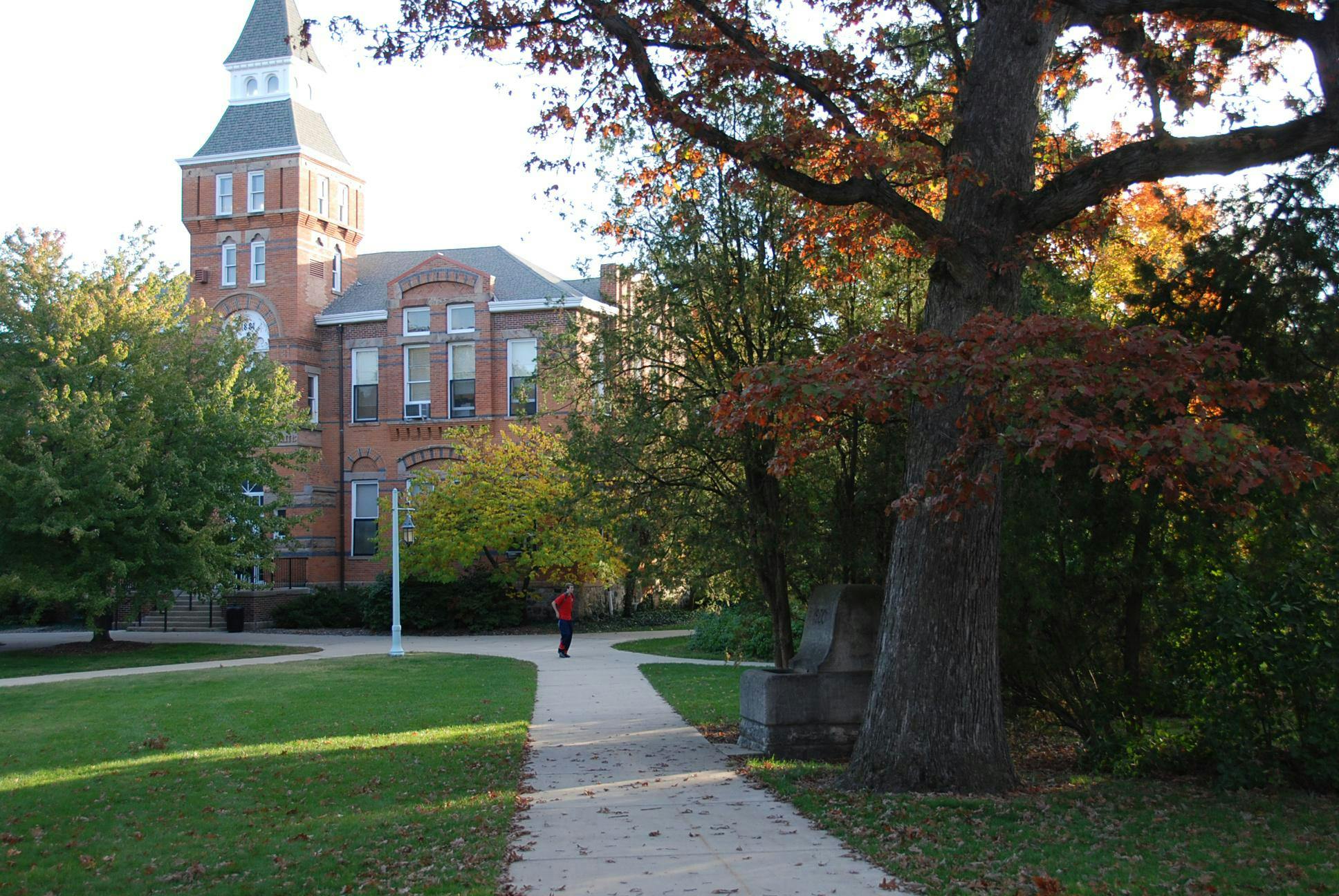In 2020, Michigan State University adopted a tree replacement policy that calls for every tree removed from campus to be replaced on a one-for-one basis.
According to a data sheet provided by Infrastructure Planning and Facilities, IPF, before this policy was adopted MSU averaged 111 trees lost per academic year starting in 2012-2013.
This resulted in populations dropping below the claimed 20,000+ trees to 18,414 on campus.
When the policy was adopted in fall 2020, MSU planted 101 more trees than they lost due to a concentrated effort to meet policy requirements, with a huge jump in numbers planted. Just in the 2019-2020 academic year, 1,126 trees were planted.
Since then MSU has averaged 82 trees gained each academic year, resulting in a total current population of 19,468 trees on campus.
This policy, called the Campus Tree Management Plan, also calls for every tree on campus to be databased and mapped on the campus tree map. This map tracks, when available, the location, plant date, genus name, common name and other data points of every tree planted on campus.
In 1873, then faculty member William J. Beal established a campus arboretum to protect and further study the trees on campus. An arboretum is a protected collection of trees used for education and research purposes.
Every tree on campus, whether bought or grown, begins its life at the Beaumont Nursery, a plant nursery dedicated to producing and tending to every tree to be planted at MSU. If a tree is requested on campus, it will come from the nursery’s stock.
If it isn’t in stock, one will be bought and sent to the nursery to be prepared for planting, or a team of arborists will go out and collect seeds to begin the process of growing a new tree.
“We collect them when they’re available, which is generally in the fall,” Jay Andrews, a nursery technician at Beaumont Nursery, said. “We make a list of seeds we want to get. Then about once a week generally if we can … we just keep going up and checking and locating the seeds.”
These seeds are then taken to the nursery where they are planted into small plastic pots to germinate. These pots are in a climate-controlled greenhouse to provide optimal growth conditions. Once the seed has germinated and started to sprout into a sapling, it is kept inside the greenhouse but moved to a larger, one-gallon pot.
Once the saplings start to outgrow their one-gallon pots, they are moved to three-gallon air pruning pots and moved outside. An air pruning pot is a special pot designed to prevent root binding; where the roots reach the wall of the pot and start to grow in circles.
When a root grows through one of these slots and reaches open air, the tip will die off and the root will begin growing lateral roots off the original main root.
This creates a sapling with a denser, stronger root ball. Stronger root balls make it so that the tree will have an easier time surviving the planting process.
“In general, we’re trying to get the trees up to a two-inch caliper,” said Andrews.
Caliper refers to the diameter of the tree trunk six inches above the ground. Andrews said it's what the workers at the nursery would call "'landscape grade' or 'landscape size' and less prone to damage.”
These trees will then be planted in the ground at the nursery and be catalogued in the nursery’s inventory. This lets landscape architects know what trees are ready to be planted on campus. When one is needed, it will be dug up with the root ball wrapped in canvas, transported to it’s new location and planted into the ground.
From here they become the responsibility of the Jerry Wahl, the campus arborist. He leads a team of arborists that maintain the tree population on campus by regularly inspecting trees and recording which ones need maintenance.
“The trees on campus have a record of all the times we’ve pruned them, watered them, and did any spraying if we fertilized,” Wahl said.
Newly planted trees are monitored for two years. They are treated for pests by drilling holes into the trunk and injecting pesticides. They are watered once a week by wrapping a green vinyl bag filled with water around the base of the tree. These bags have holes in the bottom that slowly drip water onto the tree’s roots.
Support student media!
Please consider donating to The State News and help fund the future of journalism.
The final stage for a tree on campus is death. When a tree is too damaged to remain on campus and poses a hazard, whether from disease, storm damage, or insects, it is removed and repurposed in an appropriate manner.
Trees can be mulched and used for future planting on campus or burned as a biofuel. Another option is the Sustainable Wood Recovery Initiative. This program takes reclaimed wood from downed campus trees and works with local Michigan artisans to repurpose the materials on campus.
Wood from campus trees has been used as furniture in residential and educational buildings, as building materials for a bridge in the 4H Children’s Garden and used in the MSU Shadows Collection, which uses reclaimed wood to create pieces sold at the MSU surplus store.
Discussion
Share and discuss “An in-depth look into the life of a tree on MSU's campus” on social media.



